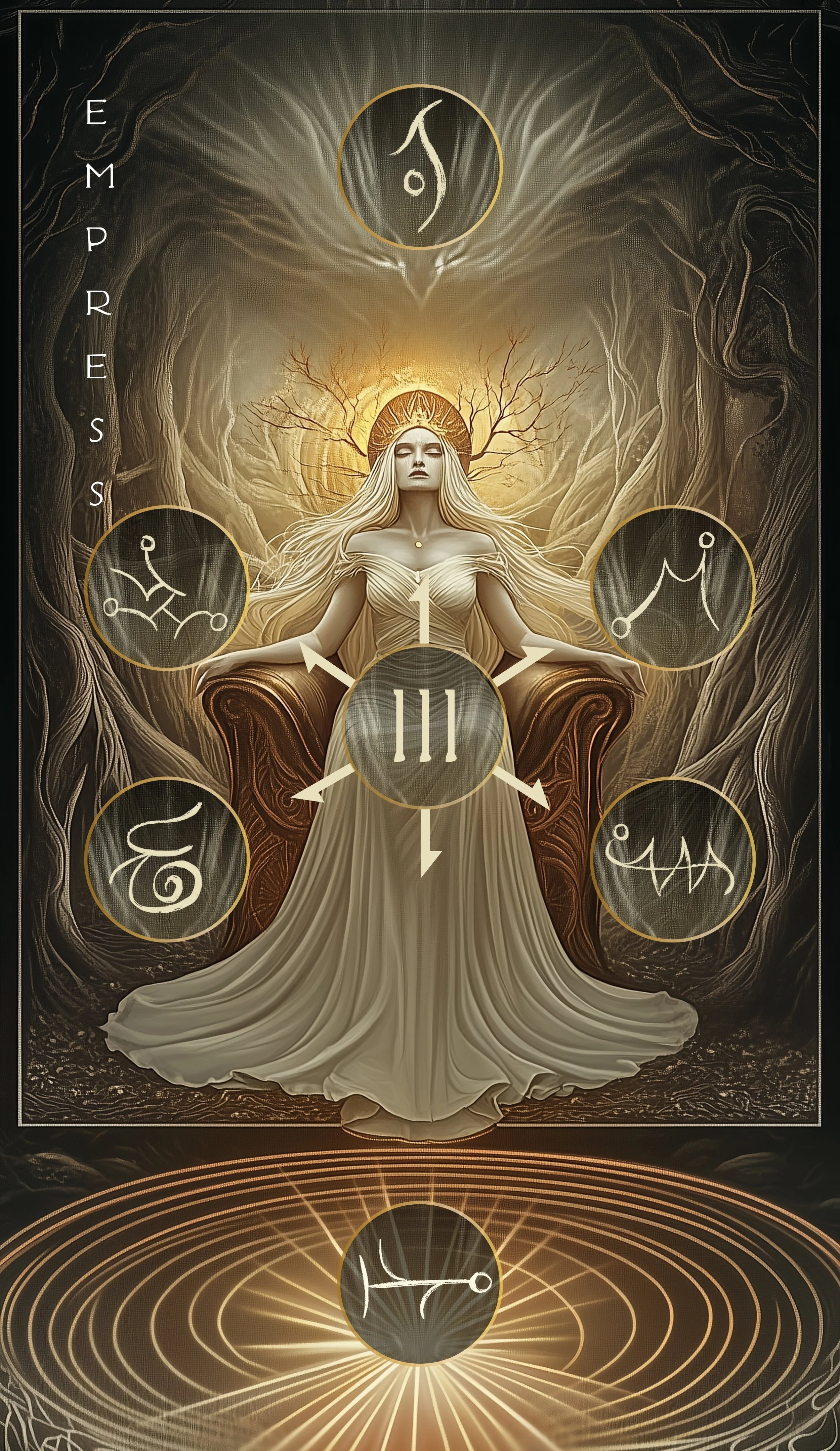Elementus: Patterns of Divinity - How Tarot Shapes the Elementus Journey
Empress Arcanum
Tarot cards originated in 15th-century Italy as part of a larger deck used for a trick-taking game, similar to modern card games. Over time, occult societies and mystics recognized their rich imagery and began assigning symbolic meaning, particularly to the Major Arcana—a set of 22 cards separate from the traditional four suits. These societies drew upon astrology, Kabbalah, and other esoteric teachings to develop an elaborate tapestry of interpretations that turned the once-mundane deck into a powerful tool for introspection and divination.
The names of Tarot cards, such as The Fool, The Magician, and Death, usually reflect universal archetypes tied to life’s stages, challenges, and spiritual journeys. Influenced by medieval and Renaissance art, they depict figures and symbols believed to represent facets of the human experience—from personal growth and transformation to cosmic forces beyond mortal control. Over centuries, mystics, artists, and occultists refined this nomenclature to capture both the mundane and transcendent aspects of existence.
Laying these cards in certain spreads or patterns, like the Celtic Cross or a Three-Card Draw, gives structure to the reading. Each position in the spread represents a specific aspect of life—past events, current challenges, future possibilities—and the symbolic content of the card placed there merges with that position’s meaning. This interplay of symbol and context allows the reader to interpret connections that might otherwise go unnoticed, offering guidance or insight into a situation.
Overall, Tarot evolved from a pastime into a layered system of images and archetypes, where the arrangement of cards in meaningful patterns helps people explore questions about their lives, dreams, and spiritual paths. Through its evocative titles and artwork, the Tarot taps into collective themes shared by cultures worldwide, transforming a simple deck into a mirror reflecting the depths and mysteries of the human experience.
In Elementus, Tarot’s symbolism and pattern-laying naturally tie into the game’s core concept of a Mortal ascending through mystic realms. The idea that a higher plane, known as Arcanum, provides powerful assistance after a Mortal reaches the Realm of Divinity echoes how Tarot readings guide individuals by revealing hidden influences or future possibilities. By naming patterns after these Arcanum cards, the game preserves the theme of constellations and cosmic connections, reflecting the notion that stars and spiritual forces can subtly direct our paths.
Just as patterns in mathematics and quantum physics describe the underlying truths of reality, the patterns in Elementus mirror a Mortal’s spiritual evolution. They act like guiding structures—akin to Tarot spreads—showing players how energies or elements interact to shape destiny. Thus, weaving Tarot-inspired Arcanum into the design reinforces the idea that, beyond the Mortal’s immediate struggles, there is a cosmic framework supporting and defining each moment of their journey.
In Elementus, these Tarot-inspired cards called Arcanum, function as powerful boons. When a Mortal’s journey brings them to the Realm of Divinity, the player gains an Arcanum card as a reward. This Arcanum not only allows the player to upgrade patterns from Level 2 to Level 3, unlocking more potent in-game effects, but it can also form the core of an Arcane Circle, a special arrangement that further enhances gameplay. By drawing on Tarot’s ancient heritage, Elementus weaves symbolic depth into its mechanics, where each Arcanum card embodies the spirit of the Tarot’s mysteries and the Mortal’s ascendant path toward higher realms.
